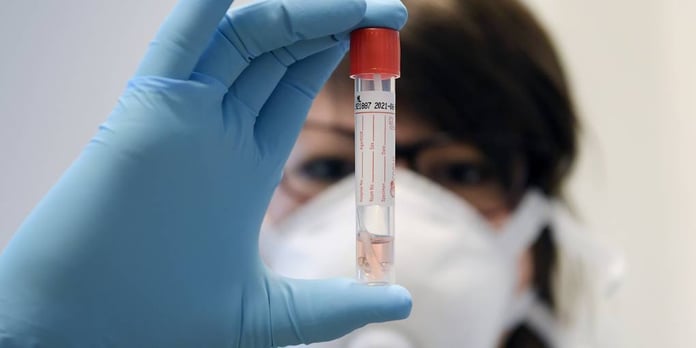
MAINZ – For a month now, the public in Rhineland-Palatinate has been looking forward to the daily number of cases of the spread of the coronavirus. This week, the increase from previously double-digit to single-digit percentages per day has decreased. Mainz-based virologist Bodo Pachter speaks of a certain trend, which should still be viewed with caution.
The first positive test for the coronavirus in Rhineland-Palatinate was given on February 27 in the West Palatinate Clinic in Kaiserslautern. On March 2, the Ministry of Health started daily reports on the development of the number of cases, at that time there were two cases. Under the sober heading “Information from the state government on the current status of the coronavirus” reads the message like the daily medical bulletin for the patient Rhineland-Palatinate.
In the first week of March, the number of confirmed infections increased by 1000 percent, that is, 11 times, to 22. In the second week, the number skyrocketed by 1236 percent, to 297. In the third week, it was 333 percent to 1285. In the fourth week to March 30, the rate of increase fell to 109 percent. But the development does not yet seem to be quite stable: the daily increase was 5.5 percent on Monday, 5.7 percent on Tuesday and 6.9 percent on Wednesday – to more than 3,000 people infected. A week earlier, however, the daily increase was still in the double-digit range.
Six deaths in the city of Koblenz alone
By Wednesday (as of 10:30 a.m.), the ministry registered the deaths of 25 people in Rhineland-Palatinate from the disease COVID-19 caused by the Sars-CoV-2 virus, three more than the previous day. Six of them were in the city of Koblenz alone. The region at the confluence of the Moselle and Rhine is a hotspot of infections in Rhineland-Palatinate. The district of Mayen-Koblenz, for example, counts most infections with the Sars-CoV-2 virus – there alone, 244 cases were registered by Wednesday (10:30 a.m.). The city of Mainz (187) and the district of Bad Durkheim (170) then follow.
Rhineland-Palatinate in the upper middle of the pandemic spread
The relative frequency of infections in the Mayen-Koblenz district is 113.9 based on 100,000 inhabitants. That is above the national average of 71.2 infected Rhineland-Palatinate to 100,000 inhabitants. According to surveys by the Robert Koch Institute, Rhineland-Palatinate is one of the countries in the upper middle of the pandemic spread: compared to 25.2 cases per 100,000 inhabitants in Mecklenburg-Western Pomerania, 55.2 in Hesse, 83.4 in Saarland and 126.9 in Bavaria.
The data for the daily number of confirmed infections are collected by the municipal health offices and then transmitted to the state examination office using the designated reporting software. From there, the bundled data is sent to the Ministry of Health in Mainz and to the Robert Koch Institute in Berlin, which is subordinate to the Federal Ministry of Health.
The data is aggregated, which means that it records the infections confirmed by tests since the virus first appeared. The number can therefore only increase or remain the same, not decrease. In addition, according to experts, it must be taken into account that the data lag behind the actual infection by about ten days – with about five days of incubation time, three days of diagnosis time and two days of reporting time.













